Viewing Automotive Parts with Polarized Light
Nov 26th 2023
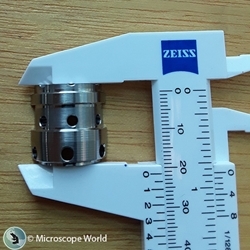 Metallic and reflective surfaces such as automotive parts are best viewed under a stereo microscope with reflected illumination. Using a microscope polarized ring light helps to reduce glare when viewing images under the microscope. The following images were obtained using a stereo microscope with a polarizing ring light.
Metallic and reflective surfaces such as automotive parts are best viewed under a stereo microscope with reflected illumination. Using a microscope polarized ring light helps to reduce glare when viewing images under the microscope. The following images were obtained using a stereo microscope with a polarizing ring light.
Below is an image of the edge of an automotive part with no polarization. The entire automotive part is shown in the image above.
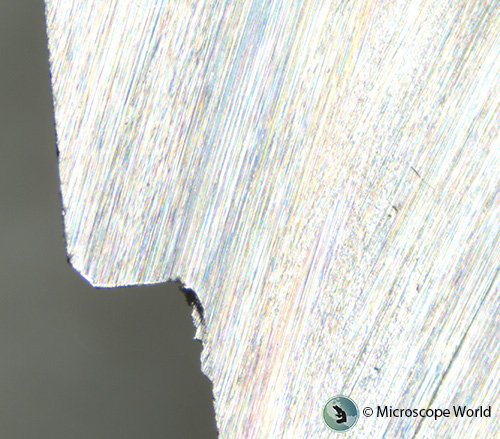
Here is the edge of the same automotive part with partial polarization. Notice how the glare is significantly reduced when using a polarized LED ring light.
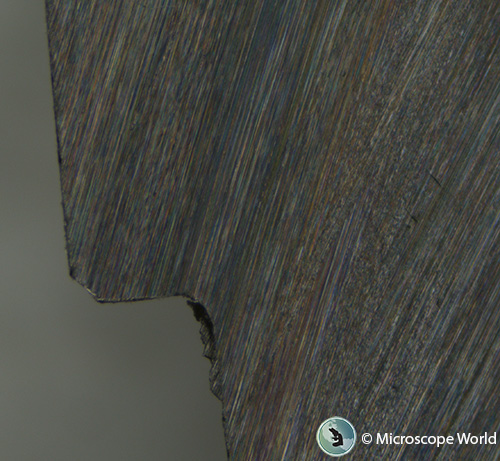
With full polarization, the sample becomes very dark.
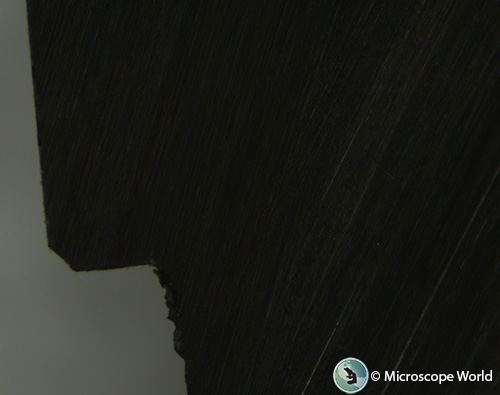
The following images show a fiber on the surface of the part. Rotating the polarizer through various angles produces different images under the microscope. At zero degrees (full polarization), the image appears dark and only the fiber stands out.
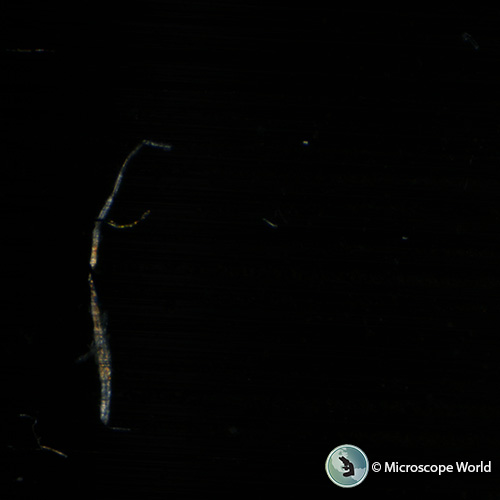
After rotating the polarizer 45 degrees, the surface is now visible.
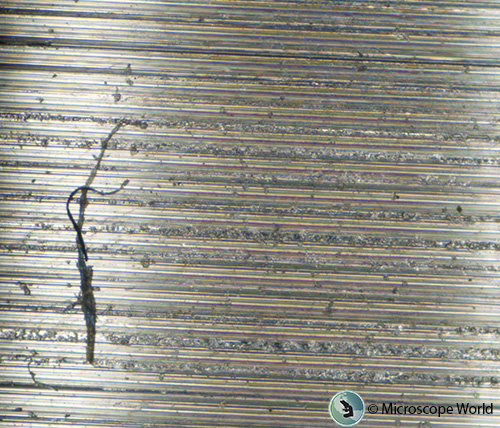
At 90 degrees rotation, notice that the image has significantly more glare.
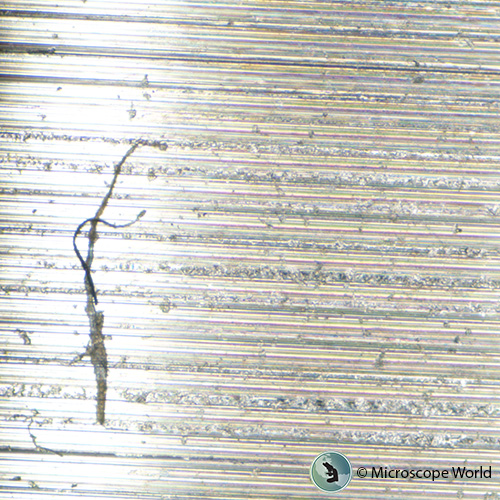
This set of images demonstrate how using a polarized light when inspecting metallic parts can reduce glare so that the surface features are more visible and can be useful for identifying surface contamination. Organic contamination, such as this fiber, will depolarize the light and therefore become bright when the rest of the image is dark. In addition to metal parts such as the one shown here, polarization can be a useful tool for looking at glass or plastic products under a microscope as stress in clear or translucent materials also depolarizes the light. Using polarized light to inspect parts not only reduces glare but can also help visualize surface contamination or other important surface features.
For more information regarding the best microscope system for your parts inspection application, please contact Microscope World.





